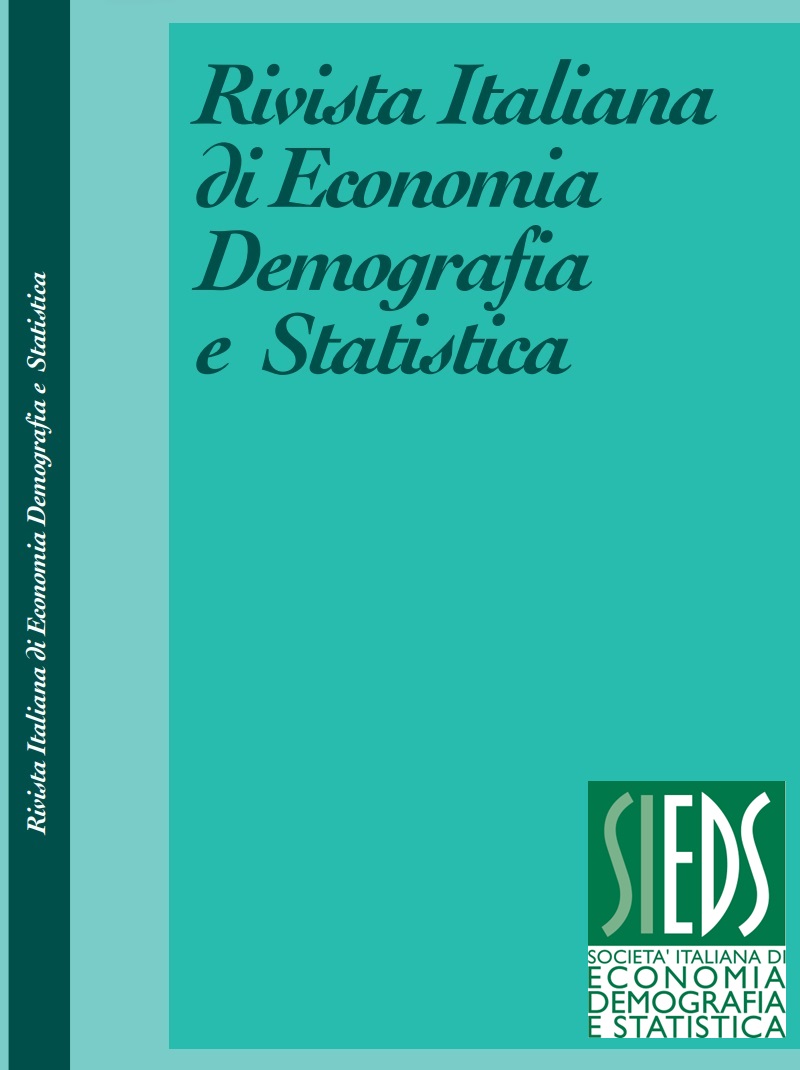Response behavior patterns among youth
DOI:
https://doi.org/10.71014/sieds.v78i3.356Keywords:
young respondents, young respondents; responsive questionnaire design; propensity to respond; response behavior patterns, response behavior patternsAbstract
In 2023, the Italian National Institute of Statistics conducted the second edition of the survey on behaviours, attitudes and future plans of children and young people, addressed to 107,635 boys and girls, between 11 and 19 years old, resident in Italy. Building on the previous experience, innovations were fielded in the data collection methods, including improvements in the questionnaire’s design. To meet the needs of young respondents, a streamlined, short, easy to answer, and responsive questionnaire was designed. We analysed data on sampling units who accessed and submitted the questionnaire and those who accessed but did not submit it to identify different response behaviour patterns among youth. First, we analysed how many times the sampling units tried to access the questionnaire, by which device and mode (by scanning the QR Code or entering the website address), and where they stopped filling in the questionnaire. Then, we studied partial non responses to non-mandatory questions – i.e. if respondents preferred not to answer when they were not obliged to do it. Finally, we applied a logistic regression model to identify the determinants of the youngers propensity to submit the questionnaire. The findings provided useful insights on the design of web questionnaires targeting young respondents.
References
ASCARI G., BRANCATO G., BRUNI A., DADDI S., DI BELLA G., GIAVANTE S., ROCCI F., SANZO R., SGAMBA A.M., SIMEONI G., SPIRITO S. 2023. Monitoring and Evaluating the Quality of the Integrated System of Registers. Working Papers 7, Rome, Istat.
BARCHERINI S., BONTEMPI K., FAZZI G., LIANI S., LORÈ B., PIETROPAOLI S., ROSATI S. 2002. The respondent as the focus of the questionnaire design. In UNECE Expert Meeting on Statistical Data Collection – Towards a New Normal?, October, Rome, Italy.
BELL A. 2007. Designing and testing questionnaires for children, Journal of Research in Nursing, Vol. 12, No. 5, pp. 461-469. DOI: https://doi.org/10.1177/1744987107079616
CONTI C., FANFONI F., FAZZI G. 2024. Giving children and young people a voice: the experience of the sample survey on children and young people in Italy. Working paper 1, Geneva, UNECE.
GROVES R. M. 1991. Measurement errors across the disciplines. In P. BIEMER et al. (Eds.), Measurement errors in surveys. New York: John Wiley & Sons.
HOSMER JR D. W., LEMESHOW S., STURDIVANT R. X. 2013. Applied logistic regression. Hoboken: John Wiley & Sons DOI: https://doi.org/10.1002/9781118548387
KROSNICK J.A. 1991. Response strategies for coping with the cognitive demands of attitude measures in surveys, Applied Cognitive Psychology, Vol. 5, pp. 213–236. DOI: https://doi.org/10.1002/acp.2350050305
Downloads
Published
Issue
Section
License
Copyright (c) 2024 Sabrina Barcherini, Serena Liani, Silvia Pecora, Simona Rosati

This work is licensed under a Creative Commons Attribution 4.0 International License.



